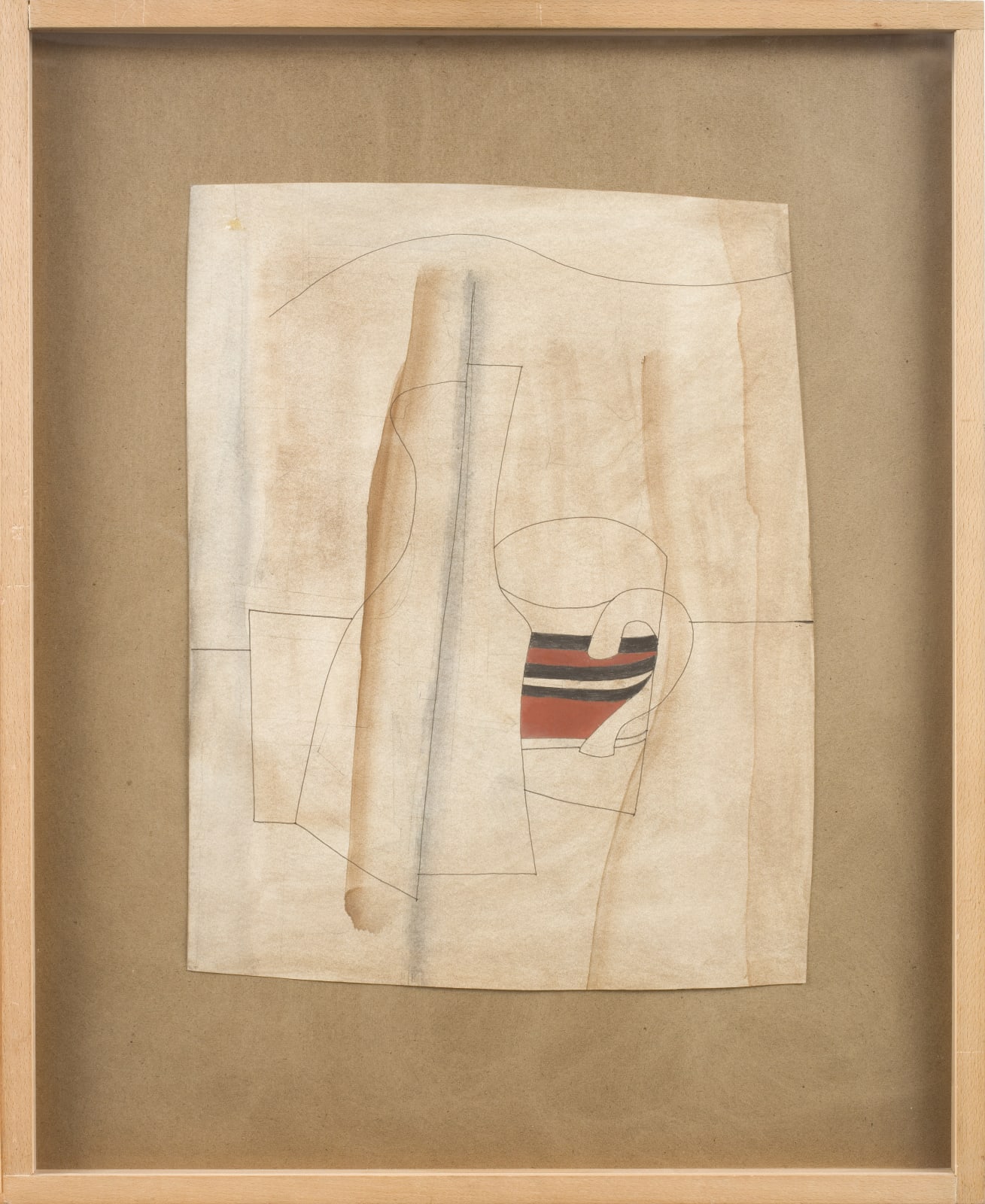-
Artworks
Ben Nicholson
Off brown and red and striped mug, 1979Pen, oil and wash on paper77.1 x 61.9 cm
30 3/8 x 24 3/8 inSpeaking to the art critic John Russell in 1963 for an interview published in The Sunday Times, Nicholson explained the origins of his still-life work in the collecting habits of his father, the painter William Nicholson. But of course I owe a lot to my father – especially his poetic idea and to his still-life theme. That didn’t come from cubism, as some people think, but from my father – not only from what he did as a painter but from the very beautiful striped and spotted jugs and mugs and goblets and octagonal and hexagonal glass objects which he collected. Having those things throughout the house was an unforgettable early experience for me. Like his father, Ben Nicholson maintained a collection of ceramic and glass vessels all through his life, and they provided him with a continual flush of pleasure and artistic inspiration. Off brown and red and striped mug shows a playful intention to isolate the colour of the ceramic vessel and extrapolate from this a sophisticated design, hence the titular allusion to ‘off brown and red’ as if the colours were somehow separate subjects from the ‘striped mug’. Though Nicholson’s pictorial ideas came to him through the objects in front of him, the underlying motive was to explore – like Cézanne, and later Braque and Picasso – the effect of an object in space, and its changing appearance to a viewer. The paper which Nicholson used for works like Off brown and red and striped mug was always pre-prepared in batches. He washed individual pieces with areas of watercolour, without any regard for what might later be depicted on the sheet. From the 1960s, he routinely started shaping the paper, creating irregular rectangles and sheets with rounded sides. Once a subject or a view was decided upon Nicholson would search his collection of sheets, washed in different ways and cut in different shapes, to find a piece of paper that suited the immediate needs of the work at hand. This well-practiced method ensured a certain richness of quality and often resulted in unexpected, enlivening contrasts between the subtle watercolour wash and the line drawing which followed it.Provenance
With Waddington Galleries, London
With Bernard Jacobson Gallery, London
Private Collection
3of 3
